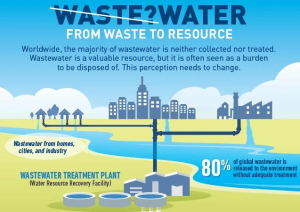About 5 years ago we embarked on a global initiative titled “Thirsty Energy” to respond to water-energy nexus challenges around the world. The initiative, a joint effort of the Water and the Energy Global Practices at the World Bank, has finally come to an end. We wanted to reflect on the lessons learnt along the way, as our team has developed a fantastic set of material and methodologies to move the needle forward on this issue. We hope that the global community takes advantage of this to ignite change.
Activities were implemented at two levels: At the global level, we focused on developing a strong communications strategy, by advocating in international conferences and publishing materials as we needed to raise awareness of the water-energy challenges, and to promote a dialogue between government, international organizations, and the private sector. At the country level, we tailored approaches depending on the available resources, modeling experience, and institutional and political realities to create water-smart energy planning tools to promote a more sustainable development of energy resources. The initiative carried 3 case studies in South Africa, China, and Morocco. The case studies have been documented and shared, so countries facing similar challenges can address the nexus issues in a more systematic way. The studies summarize the analysis and demonstrate the process and type of tools that can be employed to examine the nexus and the insights that can be gained from water-smart energy planning.
What have we learned?
The water-energy nexus is context specific, and solutions can’t be generalized. The nexus is context/regional specific, with variations in water resources due to geography, population, economic growth, demand, energy mix, and climate change. These factors can combine to create ‘hot-spots’ where the water-energy nexus is more challenging than elsewhere. It is therefore important to understand the regional challenges and devise context specific solutions to address the nexus in these critical hot-spots.
Sustainable energy planning needs to take into account water use and needs. Our results show that accounting for the regional variability of water supply and the associated costs of water supply infrastructure for energy needs can significantly impact energy planning, especially in a water-scarce country like South Africa. The work highlights the importance of the spatial component of energy and water resources—particularly in countries where water availability varies widely from region to region—and its potential impacts on the overall cost of different energy technologies. The work also show that specific energy sector policies can have significant implications for new investment in water supply infrastructure and, in some cases, can strand water supply investments (and vice versa). However, if decision makers plan in a more integrated manner they can ensure the robustness of water supply for energy and for other water users, thus maximizing the value of both energy and water infrastructure investments.
